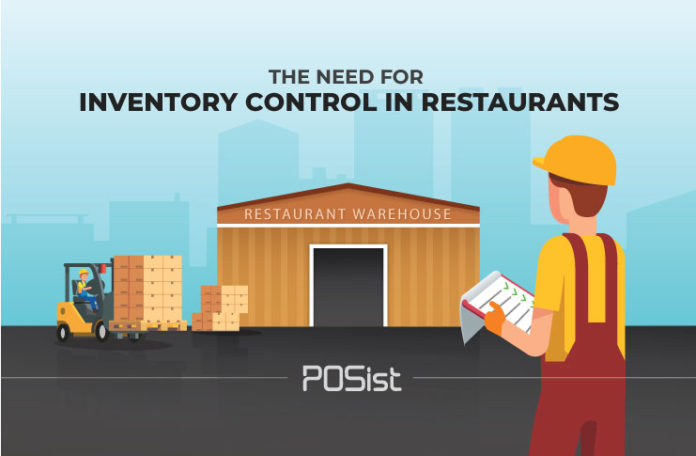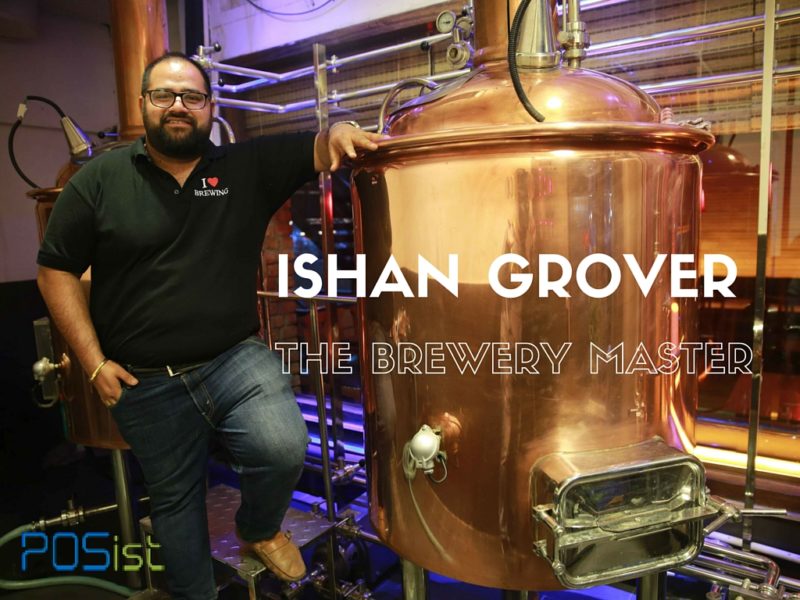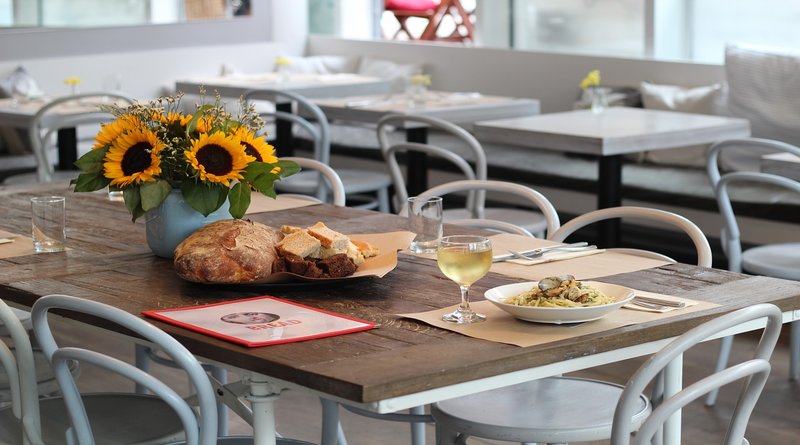One of the most critical expenses that a restaurant incurs on a daily basis is the food cost. A typical restaurant in Singapore spends almost 31.8% of their total operating expense on the purchase of goods and raw materials and is of the biggest restaurant costs. Here comes the importance of keeping a keen eye on the restaurant inventory control. Inventory control will ensure that wastage of raw materials are kept at the bay which again will ensure that you do not incur unnecessary expenses that might bleed your restaurant dry.
Inventory control can be broadly defined as all the activities involved in keeping a check on a restaurant’s stock. It includes keeping a track of the daily consumption of the raw stock ingredients, supply chain management, forecasting, and production control. Inventory control is essential as it directly impacts a restaurant’s food costs and hence, the overall profit. Here are some great restaurant inventory controlling tips.
How to Achieve Inventory Control in Restaurants
The Singapore food industry is heavily dependent on the export of raw materials. Since they are exported, one can only understand that the prices of these materials will be relatively higher. This makes it all the more important for restaurants to try and control food cost by implementing methods of restaurant inventory control.
Read on to know the best restaurant inventory controlling tips.
1. Order As Per the Requirement
Price of raw materials in Singapore are soaring high, hence ordering as per requirement becomes an essential prerequisite. Ask your manager to check the stock before ordering in for more raw materials.
However, it is quite understandable that calculating stock on a daily basis is a very labor intensive work which opens a wide scope for manual mistakes. If you want to avoid any such situations, it is highly recommended that you get on board an extremely robust restaurant management software that will help you to keep a tab on your stock seamlessly.
An efficient restaurant management software is often empowered to send you real-time alerts whenever an item reaches its reorder level, and this will help you order items whenever required. Such a system will save you from ordering items which are already in stock, which will ultimately remain unused and rot in your inventory. Integrated with the POS, the inventory management software gives you the count of the beginning and the closing inventory, it also automatically calculates the balance stock and tallies it with the available physical stock.
2. Reduce the Generation of Waste
In Singapore, the prices of the raw materials are soaring, and this increases our emphasis on the reduction of the generation of waste. Managing stock well is one of the first steps to reducing the production of kitchen waste. Here are the steps to ensuring minimal wastage of stock at your restaurant.
- Always check your inventory and order only what is required. Check your sales report to understand the approximate stock you would need for the upcoming period, which will help you save on spending unnecessarily.
- Analyze your menu periodically – Menu analysis is a must. You must review your menu, at regular intervals, to scrap off the least selling items, and replace them with the type of items that seem to be in demand.
- Use seasonal ingredients – While inserting new menu items, try and use the seasonal items. Not only will these items be cheaper than the rest, but the probability of them being ordered by the customers will also be relatively high.
- Set re-order levels for stock items. Install a robust restaurant management software that will send you real-time alerts whenever an item reaches its reorder level. This alert can be in any form; it can be an auto-generated email or an SMS. Not only will it save you from ordering when the stock is still available, but it will also make sure that your kitchen never runs out of stock on a busy hour of the day.
- First in First Out – Take the necessary steps to ensure that the items are being used on a First in First out basis. This will ensure that you don’t generate kitchen waste with items remaining unused while reaching their expiry date. This helps in food stock control.
3. Have Standardized Recipes
Inventory control cannot happen until and unless your kitchen follows a standardized recipe. This is because, whenever an order is placed, the previous period’s total sales are taken into consideration and depending on that the stock required is calculated and then the order is placed.
Hence, unless there is a standard recipe for all menu items is being followed, it will become challenging to order the exact or the approximate amount. A standard recipe consists of the quantity of each ingredient that goes into making the dish. Even the items needed for garnishing and presentation must be included. In a standard recipe besides mentioning the ingredients and the quantities, the cooking technique and the time required in each step is also mentioned. Hence a standard recipe reduces the scope of a dish getting overcooked or undercooked, which means a reduction in waste generation. Alongside, when it comes to the chain restaurant, where consistency is the key, a coherent recipe management feature comes handy. It assists in food stock control, by only using what’s required and in the right portions.
While legacy POS dominated the restaurant scene for quite some time in Singapore, there has been this shift from legacy to cloud-based POS software. A cloud POS provides you with real-time reports and alerts about the daily stock consumption that helps you keep a complete check on your restaurant inventory. This reduces the scope of internal theft and pilferage in the restaurant space to a great extent.
4. Base Kitchen Management
Central kitchen or base kitchen is primarily required in large-scale QSR chains, where consistency is the key. It is imperative for chain establishments to have the same quality, quantity, taste, and presentation and hence this makes it necessary for chain restaurants to establish a base kitchen, which will adhere to all these concerns.
Be it Popeyes, or such other big brands has very conveniently established their base kitchen to streamline the entire operations. In a central kitchen, the food items are generally semi-processed and then are distributed to different outlets.
Not only will maintaining consistency become an easy task, but it will also help you to track inventory pretty well. This is because there will be one base kitchen from where the items will get dispatched after the respective outlets raise an indent. This will ensure that transparency is maintained in the entire restaurant business. In various instances, several outlets in the large chain setup, sell dishes which are not included in the brand menu. Hence, instead of managing multiple inventories of various outlets, one master inventory must be maintained. Remember, the more you expand, the tighter should be your grip over your restaurant business. In such situations, having a base kitchen and having everything on the POS will help you track your restaurant business and its inventory pretty well.
5. Shelf Life Management
Customers in Singapore are very health conscious and give great attention to health and hygiene, making it imperative for restaurants to maintain the quality of food in restaurants rather high. To ensure optimum quality, it becomes crucial for you to manage inventory and keep a tab over the shelf-life of your raw materials.
Different materials in your inventory will have different storing temperature requirements and consequently different shelf-lives. There are some products like fruits and meat which needs to be consumed rather fast if compared to items like nuts which can be stored in the inventory for a rather long time. Here comes the importance to maintain the shelf life of the items, lest your perishable items will rot in your inventory and increase the expenses of your restaurant.
While manually checking the inventory is a tedious task, it will be a cakewalk for you if you have a robust POS on board. All you need to do is specify the shelf life of each of your products and the state the duration of the time till which you can preserve it in your restaurant inventory. If for any reason, an item remains unused even after the expiry date, the POS sends you a real-time notification, and this will save you from using a product that is not usable.
6. Detailed Reporting and Analytics
Creating regular reports and analyzing the inventory is exceptionally important. However, it becomes very difficult to manage reports manually and hence a robust POS will help you receive comprehensive sales and raw material consumption report that will help you forecast the future raw material demand and order inventory accordingly.
Having an overall sales report will help you understand your best and least selling items, that will, in turn, help you to hone your menu engineering process. Apart from the sales report, if you can receive the daily report, you will be able to tally this report with the sales report and point out any internal discrepancies that might be happening in your restaurant.
Once you have these things in place, you can be sure to have your inventory control efforts under check. Food cost is soaring in Singapore, hence having tight control over restaurant inventory is all the more critical. Therefore, keep the points mentioned above in mind and see how it helps you to order timely and correctly, without trapping you in inventory loss which might burn a hole in your pocket.


















How do I control inventory of a bar? I want information on this.
Great article on how to keep inventory control as in restraunt business it is the most difficult task to maintain it as every material coming is in bulk and keeping a check on quantities used and left would be very difficult but after reading this blog it seems like measures can be taken to keep it in control.